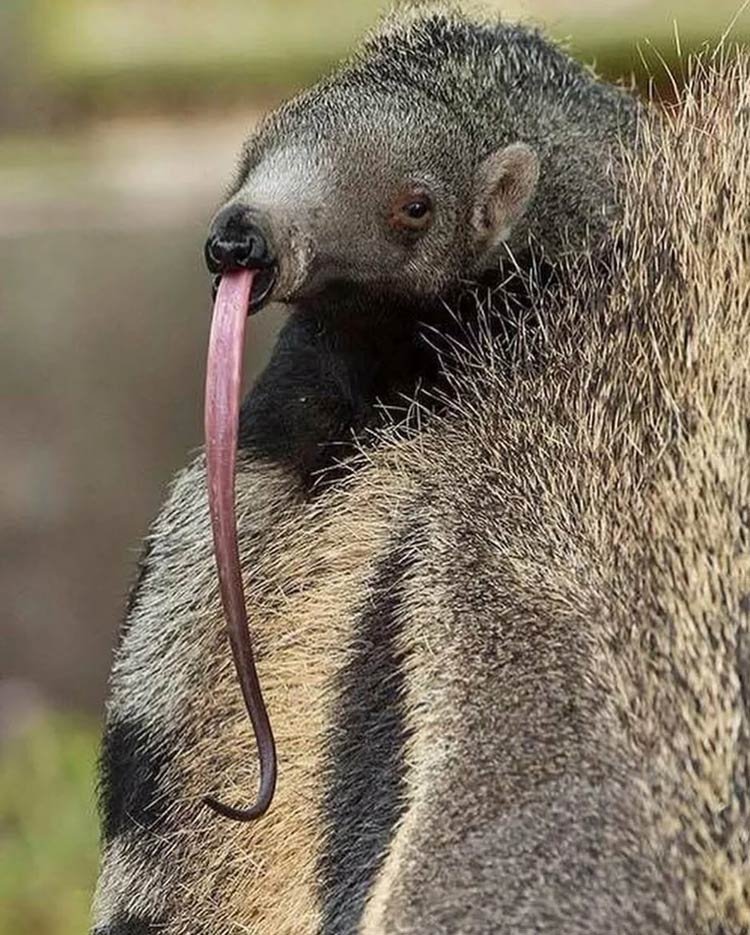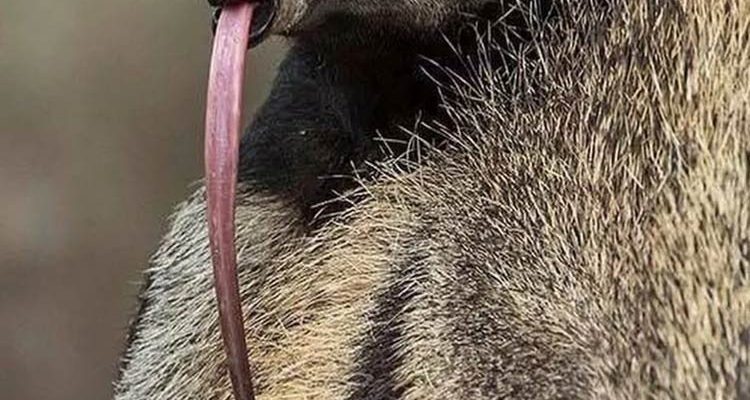
You might be wondering why anyone would even care about a creature like the giant anteater. After all, it doesn’t have the fierce reputation of a lion or the beauty of a peacock. However, understanding these animals can actually give us insights into their habitats and the ecosystems they help sustain. Plus, dispelling myths is always interesting, right? So grab a cup of coffee, and let’s unravel the truth about the giant anteater!
Myth 1: Giant Anteaters Are Dangerous
One of the most persistent myths about giant anteaters is that they can be dangerous to humans. This misconception likely stems from their large size and sharp claws. But here’s the thing: giant anteaters are generally shy and non-aggressive. Their claws are primarily designed for digging—specifically, to tear open ant and termite mounds. They’d much rather retreat than confront a human.
Even if they feel threatened, their first reaction is to run away. Imagine trying to scare off a big dog; it would likely just dash away if it had the chance. Giant anteaters are the same. They’d rather avoid conflict altogether and will only defend themselves if cornered. Knowing this can help ease fears about these fascinating creatures.
Understanding Their Behavior
Giant anteaters are solitary animals that thrive on their own. They spend most of their days foraging for food, primarily ants and termites. Their peaceful nature means they’re not typically involved in any dangerous encounters with humans. It’s important to remember that they are wild animals, though—just like any animal, they can become unpredictable when frightened.
Myth 2: They Can’t See Well
Another common belief is that giant anteaters have poor eyesight. While it’s true that they don’t rely heavily on vision, calling it “poor” is misleading. Giant anteaters use their keen sense of smell to navigate their world, much like how we might use our GPS. That’s their primary mode of understanding their environment, so they don’t need good eyesight as much as we do.
Their eyesight is actually quite good for detecting movement, especially when it comes to spotting predators. You might think of them as the quiet detective of the animal kingdom, using their senses to gather information rather than relying on their sight alone. So next time you hear someone say giant anteaters can’t see, you can set them straight!
How Vision and Smell Work Together
Imagine trying to find your favorite restaurant in a new city. You’d probably rely on both your sense of sight and sense of smell, right? It’s similar for the giant anteater. While they may not have a hawk-like vision, they can still detect threats and food sources just fine. Their eyes work well enough to aid in their survival, especially combined with their impressive olfactory senses.
Myth 3: Giant Anteaters Are Related to Other Anteaters
You might think that all anteaters are essentially the same. This myth confuses giant anteaters with other types of anteaters, but they’re not as closely related as you’d think. The giant anteater is a unique member of the suborder Vermilingua, while other anteater species, like the Tamandua or Southern Anteater, belong to a different family.
Think of it like comparing a lion to a house cat—both belong to the feline family but are clearly quite different. Giant anteaters have adapted to a specific lifestyle that sets them apart, primarily due to their size and unique feeding habits. So while they’re all anteaters in some sense, their differences are significant.
Unique Features of Giant Anteaters
Giant anteaters have some remarkable features, like their long snouts and large front claws. These adaptations make them especially good at foraging and breaking into ant hills. On the other hand, smaller anteater species have different adaptations that suit their smaller size and lifestyle. This variety showcases nature’s creativity and helps maintain balance in their ecosystems.
Myth 4: They Only Eat Ants
You might think that giant anteaters live solely on ants, but that’s not entirely true. While ants and termites make up the bulk of their diet, they’re not picky eaters. These animals may also munch on other insects and larvae when they come across them. Just like how you might enjoy a slice of pizza but wouldn’t refuse a slice of cake if it was offered, giant anteaters are flexible with their food choices.
This flexibility is crucial for their survival, especially in areas where ant populations fluctuate. Their diet can change based on availability, allowing them to adapt to different environments. So while ants are their go-to food, they’re not exclusively tied to them.
Feeding Habits Explained
When a giant anteater finds an ant mound, they use their sharp claws to tear it open. They then whip their long, sticky tongues in and out, slurping up the tasty morsels. This method is quite efficient and allows them to consume thousands of ants in a single meal. Imagine if you could eat a whole pizza in one bite—that’s how effective they are!
Myth 5: They Don’t Play a Role in the Ecosystem
Some people think giant anteaters are just loners that don’t contribute much to their ecosystems. This couldn’t be further from the truth! Giant anteaters help control ant and termite populations, which in turn affects other species in their habitats. Without them, some insect populations might explode, leading to an imbalance in the ecosystem.
Think of them as unsung heroes. You might not see them often, but they play an important part in keeping things running smoothly. The loss of giant anteaters could lead to larger issues in biodiversity and environmental health, so they truly matter more than we sometimes recognize.
How They Impact Their Environment
By keeping the ant and termite populations in check, giant anteaters create a more balanced habitat. This balance allows other species, like birds and mammals, to thrive as well. It’s much like how we rely on different parts of our community—everyone plays a role that contributes to the greater good.
So there you have it—some common myths and misconceptions about the giant anteater debunked! These unique creatures are more fascinating and valuable than they often get credit for. Understanding them better helps us appreciate the importance of biodiversity and the fragile ecosystems we share.
Next time you hear someone spout a myth about giant anteaters, remember what you’ve learned. These quirky mammals aren’t just cute; they serve a vital role in their environment, and it’s important to shed light on their reality. So go ahead and share your newfound knowledge with friends or fellow animal lovers—you might just spark their interest in these incredible creatures!

